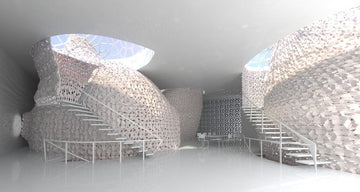Getting Started with 3D Printing for Cosplay:
a. Choose the Right 3D Printer: If you're new to 3D printing, opt for a beginner-friendly printer with good reviews and support. Fused Deposition Modeling (FDM) printers are commonly used in cosplay due to their affordability and ease of use.b. Select Suitable Filaments: PLA is an excellent choice for most cosplay applications. It's easy to print with, comes in various colors, and is relatively inexpensive. For functional parts requiring durability, consider PETG or ABS filament.
c. Learn the Basics of 3D Modeling: Familiarize yourself with basic 3D modeling using software like Tinkercad or Blender. Understanding 3D modeling will help you customize existing designs or create your unique pieces.
Finding and Customizing 3D Models:
a. Online Repositories: Look for cosplay-specific 3D models on websites like Thingiverse, MyMiniFactory, and Cults3D. Many creators share their designs for free or at a reasonable price.b. Model Customization: To make a cosplay piece unique, learn how to tweak and modify existing 3D models. You can resize, combine, or add details to tailor the design to your specific needs.
Printing Tips and Techniques:
a. Layer Height and Infill: Adjust the layer height and infill density to balance print quality and speed. For detailed props, use a finer layer height, but for larger pieces, a coarser layer height is acceptable.b. Support Structures: Use support structures for overhanging parts, but be cautious of where they attach to the model to avoid damaging the surface finish.
c. Post-Processing: Sand and smooth the 3D-printed parts for a clean surface. Fill gaps or imperfections with filler putty, and apply primer before painting.
Assembling and Finishing:
a. Bonding: Use appropriate adhesives, such as super glue or epoxy, to assemble parts together securely. Test-fit components before gluing to ensure proper alignment.b. Painting and Detailing: Use acrylic paints and techniques like dry brushing, weathering, and shading to add realism and depth to your cosplay props.
Integrating Electronics:
a. LEDs and Electronics: Incorporate LEDs or electronics into your cosplay props for added visual impact. Learn basic soldering and wiring techniques for a professional finish.b. Power Source: Consider battery placement and accessibility to ensure ease of use during events or conventions.
Wearability and Comfort:
a. Weight and Comfort: Balance design details with wearability. Large and heavy props might be impressive, but they could become cumbersome during extended use.b. Harness and Straps: Implement comfortable harnesses or straps to distribute the weight of props evenly and securely.






